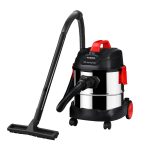Last Updated on March 31, 2023 by tabraiz579
Would you like to know how to write top-notch content for your website? Wondering how to proceed? Producing quality, spelling-free content is essential, but not enough. As you know, reading on screen has nothing to do with reading on paper. Reading lacking fluidity, less comfort for the eyes, in short, the user gets tired quickly. Writing for the web also requires knowledge of optimization techniques in order to appeal to search engines. Whether you are a professional blogger or an e-commerce site owner, you must adapt your writing to these constraints by producing readable and relevant content for both UX (user experience) and Google. Here are the 3 basic principles to know and apply to write well for the web.
1. Write content for a targeted audience
Your site has one objective: to attract Internet users in order to sell them a product, training, or offer them reliable information on a specific topic. If your web editorial charter guarantees the harmonization of your textual content, you must also find the best way to address your prospects or customers.
Build a portrait of your ideal clients
Have you ever tried the personas method? Inspired by marketing, it helps to understand the motivations of Internet users through the development of typical portraits of target audiences combining behaviors, lifestyle, habits and even a first name. Personalizing the profiles of Internet users helps to adapt to the target reader and instills a real human dimension in the content. Ask yourself about the type of industry your client works in, the resources they use, their age, marital status, social media activity, etc.
Think about the main audiences you want to reach by defining between 3 and 5 personas to avoid too much dispersion. If for example you sell wedding decorations, consider creating 3 personas. Briefly, here is what it could give:
- the bride-to-be, Jennifer, 28, a bank clerk who wants the prettiest decorations possible and devours all the wedding-related blogs;
- the future groom, Anthony, 30, a real estate developer, who wants to please his fiancée while trying to impress those close to him and who holds the purse strings;
- The mother of the bride, who follows her daughter’s choices while wishing to please everyone and not exceed a certain budget.
A little tip if you are a blogger: find ideas thanks to your readers. There’s nothing like drawing inspiration from real people to succeed in better understanding the expectations of your audience by offering concrete and lively content to read.
Consider UX
Each user does not consult the Internet at the same time of the day or on the same type of terminal. Your customers use the three types of screens (computer, mobile, and tablet) differently from each other. Designing a site in a responsive way is therefore essential today to keep Internet users on your page. To improve the user experience, the content must therefore adapt to both a large screen and a smaller smartphone screen. In addition, often in a hurry and inattentive, the Internet user is looking for precise information, so make his life easier by always having at heart to offer qualitative content.
2. Develop quality content
Find relevant information
Writing well for the web requires knowing how to find a ghostwriter that will serve as a basis for writing your content. Cross-reference the information in order to verify it, the Internet user expecting reliable and quality information. Give concrete to his reader and show the mastery of his subject is a golden rule: the filling is to be avoided under penalty of losing credibility.
To go straight to the point
While school teaches us to write from the secondary argument to the most important, in web writing, the essential information must on the contrary be delivered from the start in order to hold the reader’s attention. The trick is to prioritize the information with the inverted pyramid using the 5W2H technique: what, who, where, when, why, how and how much in English, i.e. what, who, where, when, why, how and How many. Be careful, however, to maintain the reader’s curiosity after the first lines.
Write clearly and concisely for optimal reading comfort
An author for the web is not a writer and must write a maximum of things in a minimum of words without serving his purpose. Favoring a spirit of synthesis with a single idea per paragraph makes it possible to banish redundancies and heavy turns. Write short sentences by airing your text and making the titles and intertitles identifiable. Don’t forget that reading is done on screen: nothing is more tiring for the eyes than reading content written in a single block without spaces. Finally, say goodbye to spelling and typographical errors so that you don’t come across as an amateur.
Hook up the reader
Web writing includes a real strategic dimension. A study on eye movement conducted by Jacob Nielsen and John Mores showed that Internet users scan texts. Only 20% of content is actually read. The strategic zones or “hot zones” are drawn in the shape of an F: Internet users essentially read the information contained at the top and left of their screen. It must therefore include the key information and the links to which we want to encourage the Internet user to click.
Titles encourage the Internet user to continue reading, choose copy written and short titles that make you want to click while adopting a powerful vocabulary that calls to action.
Are your titles appealing? Perfect, but don’t forget that they must also deliver on their promise by following a common thread to bring the reader to the information promised at the start. To learn more about this famous common thread, do not hesitate to refer to Lucie Ronde let’s video on the subject.
3. Write well for the web by writing SEO-optimized text
Optimize your content for SEO on Google
Wealth of keywords and semantic field used, correct HTML markup, bounce rate, internal linking, etc. are all parameters not to be neglected for a good natural referencing. With the exception of e-books and other documents not intended to be indexed by Google, each content is referenced by search engines. Google’s algorithm may remain mysterious, but the BA BA of SEO should be known to any website owner.
Choose an appropriate main query
The relevance of the content, taken into account by Google, is a determining factor of its place on the SERP. Some tools like 1.fr , Your Text Guru or Ubersuggest help to determine the choice of a main query and the keywords associated with it, it’s possible positioning, the competition. Olivier Landrieu recommends working on key requests subject to 1,000 to 8,000 monthly searches. Beyond that, a request will be too competitive and will therefore require much more time and backlinks for advantageous positioning. Below 1,000, the request targeting a niche sector is not very competitive and must correspond to the particular core business of your website.
Use a rich semantic field
To determine the quality of a text, Google takes into account the richness of the semantic field around the main query and not just the keywords inserted into the text. A page must contain secondary queries, that is to say expressions close to the main query and synonyms.
An example: you want to sell mountain clothing to a large audience. Some keywords to focus on would be: mountain clothing, gloves, hat, wetsuit, mittens, comfortable mountain clothing, warm mountain clothing, etc.
To do this, use synonym dictionaries online. That of the University of Caen, for example, is very comprehensive.
Structure your text
HTML tags are to web writing what headlights are to browsers. So that text formatting doesn’t drown out the reader and lose Google, the structure has to be consistent. Internet users like to read pleasantly constructed content and Google identifies HTML tags to determine the different areas of the content. The Title and Hen tags should have no secrets for the SEO web editor. The main query is to be placed in the H1 and each paragraph is then organized using headings (H2 to H6). Key words are written in bold while maintaining harmony in density (too many bold words making reading unpleasant).
What you must remember
Small recap. To write well for the web by reconciling UX and natural referencing, you need:
- succeed in putting yourself in the shoes of your Internet users;
- write flawlessly both in content and form;
- Know the basics of SEO to optimize your content.
Apart from this, if you want to know about Java web Development Company help e-commerce business then please visit our Digital Marketing category


























